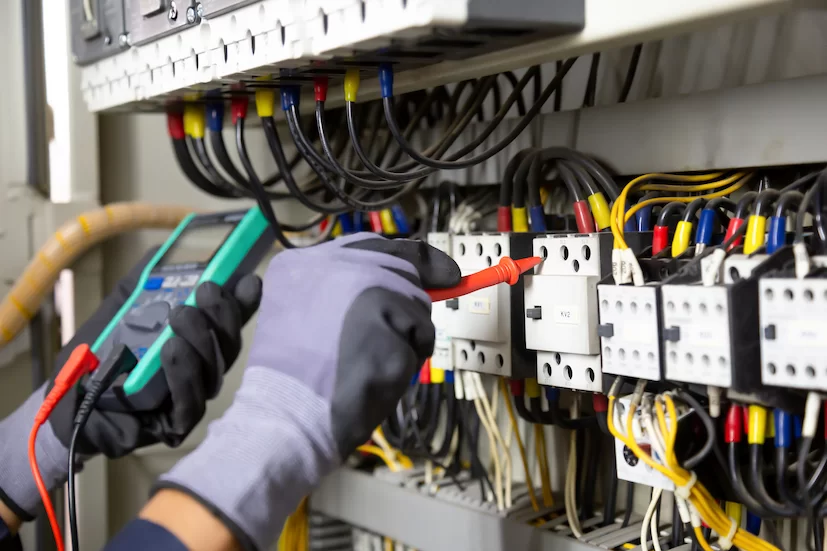Cutting-Edge Innovation with BRE Automation Australia Services
Cutting-Edge Innovation with BRE Automation Australia Services
Blog Article
Debunking Electric Installment: Comprehending Codes and Regulations for a Lawful and Safe Configuration
In the realm of electrical setup, adherence to codes and laws is critical to make certain both legality and security. The complexities surrounding electrical job can be daunting, however acquainting oneself with the well-known standards is essential to navigating this area with confidence. By comprehending the ins and outs of the National Electric Code and regional building ordinance, individuals can ensure that their installments satisfy needed precaution and remain in conformity with the law. The journey to debunking electric installation goes past plain familiarity with laws; it demands an extensive grasp of how to implement risk-free electric practices properly.
Relevance of Electrical Codes
The adherence to electric codes is essential in making sure the safety and security and integrity of electric installations. Electrical codes act as a collection of criteria and standards that dictate the proper design, installation, and upkeep of electrical systems. These codes are established to decrease the risk of electrical risks, fires, and other safety and security worries that may develop from malfunctioning electrical work.
In addition, electric codes are regularly upgraded to integrate brand-new modern technologies, finest techniques, and safety and security steps. Staying upgraded with these codes is vital for specialists in the electrical market to ensure that their job meets the current safety standards. Inevitably, the significance of electrical codes hinges on producing a protected and efficient electrical infrastructure that profits both people and neighborhoods.
Secret Rules for Safety
Numerous basic guidelines control the security criteria in electrical installations. One essential law is the National Electrical Code (NEC), which gives guidelines for secure electrical design, installation, and assessment to secure individuals and property from electrical hazards. The NEC covers elements such as circuitry approaches, grounding, overcurrent defense, and devices installation to ensure a secure electrical system.
An additional critical policy is the Occupational Safety and Wellness Administration (OSHA) standards, which concentrate on the security of workers involved in electrical setups (BRE Services). OSHA policies consist of demands for proper training, safety procedures, and personal protective tools to protect against work environment accidents and injuries
In Addition, the International Electrotechnical Commission (IEC) requirements intend to integrate electric setup regulations on an international range. These requirements address issues like electrical devices safety and security, electro-magnetic compatibility, and power effectiveness to promote uniformity and safety in electrical installations worldwide.
Compliance with these vital regulations is important to ensure the security and legality of electric installations, safeguarding both individuals and residential or commercial property from the dangers related to electrical energy.
Understanding National Electric Code
Key guidelines such as the National Electric Code (NEC) provide important standards for safe electric style, setup, and inspection to guarantee the protection of people and home from electrical dangers. The NEC, additionally called NFPA 70, is a thorough collection of requirements for electrical setups that are upgraded every three years. It is developed by the National Fire Security Organization (NFPA) and is extensively embraced throughout the United States.
The NEC covers numerous aspects of electrical job, including electrical wiring approaches, grounding, overcurrent defense, and equipment installation. It aims to guard people and residential or commercial property by attending to prospective threats related to electric systems. Compliance with the NEC is typically applied by neighborhood authorities having territory (AHJs), such as constructing code officials and inspectors.
Comprehending the NEC is vital for electric contractors, developers, and informative post inspectors to make sure that installments fulfill the needed safety needs. By sticking to the NEC standards, professionals can assist stop electrical crashes and guarantee the dependability of electrical systems in property, business, and commercial setups.

Conformity With Regional Building Ordinance
Comprehending and adhering find to neighborhood building codes is vital for making certain the safety and compliance of electrical setups within a particular territory. These codes lay out specific requirements for electric installments, such as the type of wiring to be made use of, placement of electrical outlets, grounding approaches, and load capabilities.
When it comes to electrical installments, failing to abide with neighborhood building codes can result in severe repercussions. Non-compliant setups might pose safety risks, increase the threat of electrical fires, and lead to expensive penalties or legal problems.
Ensuring Safe Electric Practices
Exercising strict adherence to developed safety procedures is vital in the field of electric installments to mitigate potential dangers and guarantee the well-being of people and homes. Security in electric job encompasses numerous elements, beginning with the appropriate training of employees involved in setup, upkeep, and repair work. It is vital to follow manufacturer directions meticulously when managing electrical components and devices. Prior to starting any type of work, it is vital to conduct a comprehensive threat assessment to identify potential hazards and execute safety nets. Using personal protective tools (PPE) such as protected handwear covers, safety and security glasses, and non-conductive shoes is non-negotiable to safeguard against electrical shocks and arc flashes. Regular equipment inspections, testing, and upkeep schedules are indispensable to spot and correct faults prior to they intensify into safety and security hazards. Adherence to appropriate lockout-tagout procedures throughout upkeep activities is important to avoid unintended energization of circuits. By prioritizing secure practices, electrical setups can operate effectively while minimizing the possibility read this article of accidents or damage.
Conclusion
Finally, adherence to electrical codes and regulations is important for making sure the security and legality of electric setups. Understanding the National Electric Code and conformity with local structure codes are crucial for a safe configuration. By following these standards and practicing secure electric techniques, people can stop potential hazards and make sure the correct functioning of their electric systems.
Report this page